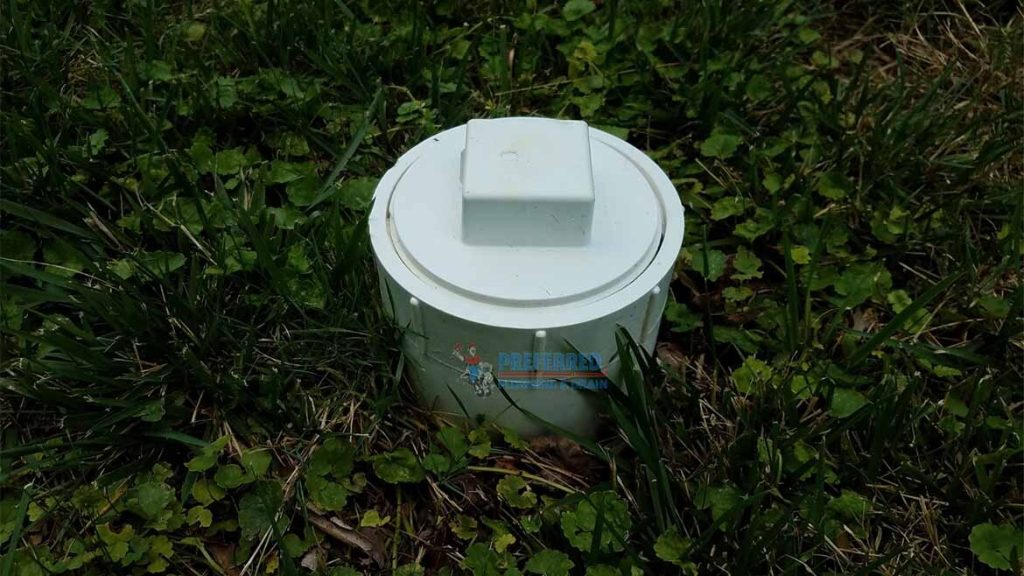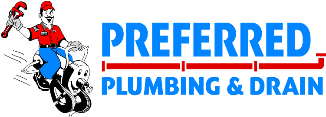
How to Install a Clean-Out and Why Your Home Needs One
You must have tried various solutions like draining hot water, snaking, or cleaners to get rid of clogged drains; still, the same problem keeps coming back. Right?
It can become even more frustrating when it’s not just one drain but multiple sinks, showers, or even toilets acting up at the same time.
Constant red flags like bad smells in your home, toilets backing up, or gurgling noises while draining usually mean it’s more than just a small clog. That suggests you need to contact professional plumbers to inspect and get it fixed.
But what if the real issue is deep underground in your main sewer line? And without an access point, even the best plumbers can’t get to it easily. That’s where a sewer clean-out comes in - a small but mighty feature that can save you from big plumbing headaches.
| Don’t wait until it’s too late—Call Today for clean-out service. |
What Is a Sewer Clean-Out?
A sewer clean-out is basically an access port. In simple words, it’s a short pipe with a cap on top that connects directly to the main pipe carrying all the wastewater from your sinks, showers, toilets, and laundry out to the city sewer or your septic system.
So plumbers have an easy access point to check what’s going on inside your sewer line. Without it, reaching a deep clog or inspecting your pipes might require tearing up floors, walls, or your yard.
Main Features
- It looks like a capped pipe and is usually about the size of a coffee mug in diameter.
- You’ll find it outside near the foundation, in the yard, or sometimes inside basements/garages.
- It helps plumbers do their job faster. They can remove the cap, send in cameras or tools, and clear blockages without any difficulty.
- Newer homes usually have plastic clean-outs (white or black), while older ones might be metal. Either way, it does the same job.
Why Does Your Home Need a Sewer Clean-Out?
1. Emergency Access
In case of an emergency plumbing or drain issue, you need to act quickly. When a sewer line gets blocked deep under the ground, without a clean-out, plumbers may need to dig up the yard, driveway, or even remove fixtures to access the line. A clean-out offers direct access and allows emergency plumbers to clear the problem quickly without unnecessary digging.
2. Faster Diagnosis & Repair
Imagine your sink is slow, the toilet backs up, and the shower drains water very slowly, too. Instead of guessing where the issue is, a plumber can use a clean-out plus a camera to inspect inside, find root intrusion, tree roots, broken pipe sections, etc.
3. Cost Savings in the Long Run
Installing a clean-out does cost money, but it can save you much more in the long run. Without it, fixing a clogged sewer line also includes tearing up your yard, breaking walls, or paying for costly emergency repairs. A clean-out prevents all that and helps you avoid those big, unexpected bills.
4. Health and Safety
When a sewer line backs up, it can bring foul smells and harmful germs into your home. In some cases, sewer gas can even leak indoors if the system is blocked. A properly sealed clean-out cap keeps these risks out, protecting your family’s health and keeping your home safe.
5. Preventive Maintenance
Even if you're not having problems, having a clean-out means plumbers can periodically check, clear out tree roots, flush debris, and use video inspection without tearing things apart. It helps you prevent big disasters.
| Contact Us for fast, reliable sewer clean-out services! |
How to Locate Your Existing Sewer Clean-Out?
Before you think of installing a clean-out, you must check if one already exists.
- Walk around the perimeter of your house near the foundation. Look for a 3 to 4-inch capped pipe, possibly white or black plastic, or a metal one in older homes.
- If you don’t see it outside, check inside places like the basement, utility room, garage floor, or near a full bathroom where several drains connect.
- Sometimes, clean-outs get hidden under soil, plants, or landscaping. They can also be covered by a metal lid or a box. If you can’t spot it right away, try moving mulch or checking along basement walls.
Where & How to Install a New Clean-Out?
If you don’t have the clean-out or it's badly positioned, installing a new one is the smart move. While it’s best handled by a licensed plumber, knowing the steps helps you understand what’s happening in your home.
-
Step 1 - Assessment & Location Selection
The plumber first inspects your plumbing system to find the best spot for the clean-out. It’s usually placed where your home’s sewer line exits the foundation or before it connects to the city sewer or septic tank. The location must be easy to reach for future repairs.
- Step 2 - Permits and Local Codes
In most cities, installing a clean-out requires following plumbing codes. That means pulling the right permits and making sure the installation meets local rules. This keeps your system safe, legal, and ready for inspections if needed.
-
Step 3 - Excavation or Access
Next, the plumber creates access to your sewer line. Outside, this usually means digging into the yard. Inside, it could mean opening a wall or a section of flooring. Don’t worry, if you hire an experienced team of plumbers, they will try to keep the disruption to a minimum.
-
Step 4 - Cutting Into the Sewer Line
Once the pipe is exposed, a section of the sewer line is carefully cut out. The plumber then installs a “Y” or “T” shaped fitting that will connect the clean-out to your main line.
-
Step 5 - Adding the Clean-Out Pipe and Cap
A vertical pipe is attached to the fitting, leading up to ground level (if outside) or to an accessible spot indoors. The top is sealed with a removable cap, which keeps sewer gases in and pests or debris out.
-
Step 6 - Backfilling and Repairs
After the clean-out is in place, the plumber covers everything back up. If it’s outdoors, the soil is filled and compacted, and indoors, walls or flooring are patched up. The clean-out is left clearly visible so it can be used in the future.
-
Step 7 - Testing the System
Finally, the plumber runs water through your drains and may use a camera inspection to make sure everything is working properly, with no leaks. Once it’s tested, your new clean-out is ready to make future repairs and maintenance much easier.
Common Questions People Ask About Clean-Out
1. Should You Install a Clean Out Yourself or Hire a Plumber?
You can use DIY methods if you have plumbing experience, the proper tools, know local codes, and are confident working with large-diameter sewer pipes. Incorrect installation can lead to leaks, sewer gas, structural damage, or code violations.
On the other hand, professional plumbers bring experience, tools, code knowledge, and a warranty, so there is less risk.
2. How much does it cost to install a sewer clean-out?
The cost of a sewer clean-out installation can vary depending on various factors, like pipe material, depth, and accessibility. On average, installing a clean-out is a one-time investment that can save you money on future emergency repairs.
3. What happens if my home doesn’t have a sewer clean-out?
Without one, when the main sewer line clogs, plumbers may have to remove toilets, go through roof vents, or even dig up the yard or floors. These methods take longer, cost more, and cause more damage.
4. Does having a clean-out mean no more sewer backups?
No, it doesn’t prevent backups by itself, but it makes fixing them much easier. It also helps prevent small problems from turning into big ones. You still need to take care of your drains, like avoiding flushing inappropriate items and keeping tree roots away, etc.
| Skip big repairs—Get a Clean-Out Today! |
Takeaway
If you’ve ever dealt with a clogged sewer or backed-up drains, installing a clean-out can be a smart solution. It helps prevent serious plumbing problems, saves you money on emergency repairs, and keeps your home safe and clean. It also gives you peace of mind as you know your plumbing is easier to maintain and emergencies can be handled quickly.
Read More About:
- Which Sewer Repair Works Best? Pipe Lining vs. Pipe Bursting
- What’s the Difference Between a Drain Pipe and Sewer Line?
- Benefits of Low-Flow Toilets: Save Water and Money
- The Role of Hydro Jetting in Stopping Future Clogs
Don’t Risk a DIY Job - Choose Professional Clean-Out Installation With Preferred Plumbing & Drain!
If you don’t have a sewer clean-out yet, now is the time to get one installed. At Preferred Plumbing & Drain, we are proud to be among the best plumbers in San Jose and the surrounding areas.
We use modern tools, including video inspection cameras and high-quality fittings, to make sure your clean-out is installed correctly. Our skilled team doesn’t just install the clean-out; we also inspect and fix any plumbing or drain issues we find.
With over 19 years of experience, we are the most trusted and reputable local plumbers. Call us at 800-414-0340 - our emergency plumbers are ready to assist you as quickly as possible!

Bryan Graves has been in the plumbing and drain cleaning industry since 1989, starting as a service technician. He served as Vice President to the CEO until 2006, which is when he started his own business, Preferred Plumbing & Drain. For the past 19 years, he has kept a 97% customer satisfaction rating by making sure every customer of Preferred Plumbing & Drain is happy enough to recommend us to others. When Bryan is not working, he enjoys spending time with his family, going boating, and watching sports.


 Request a Service
Request a Service